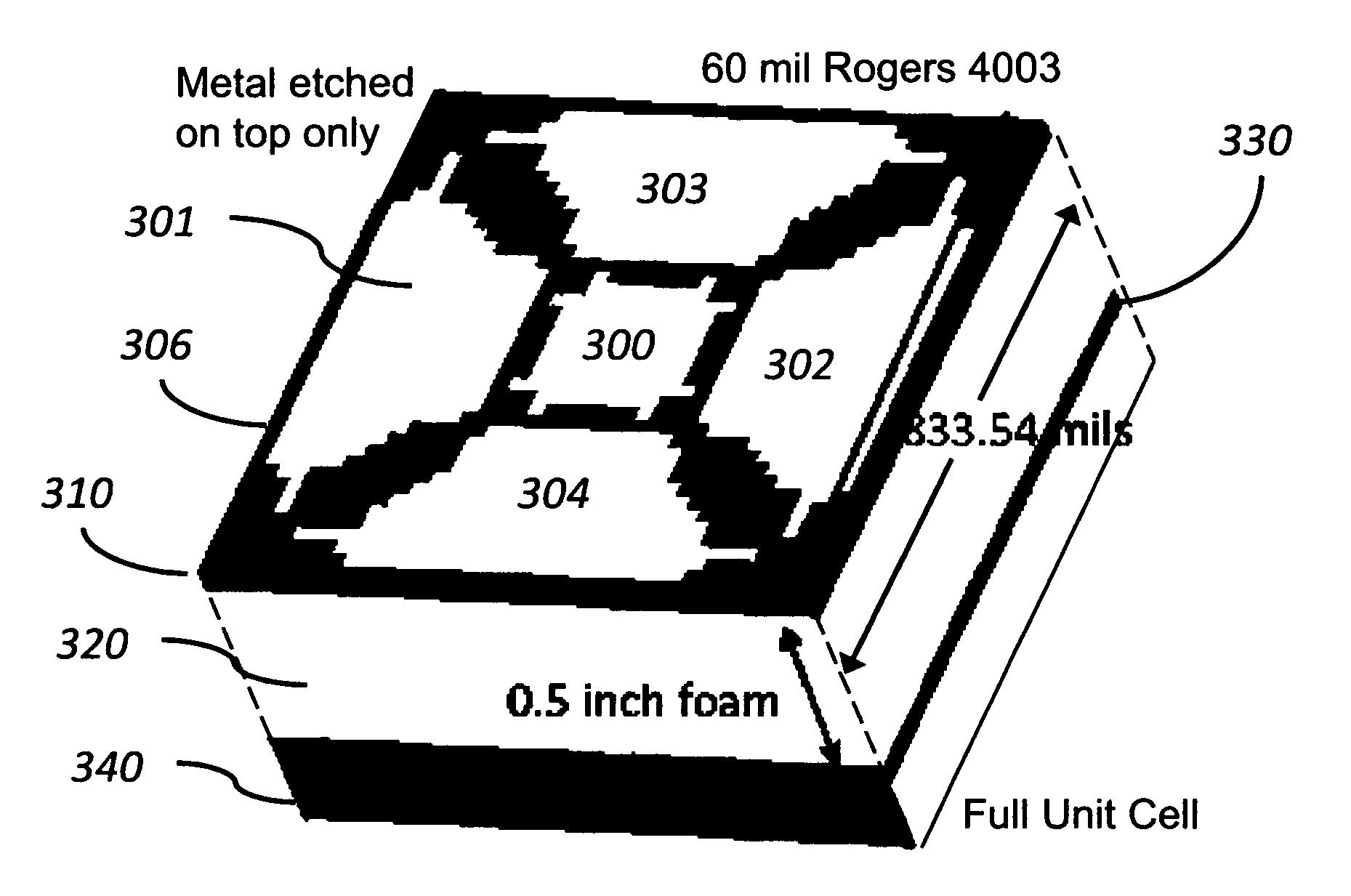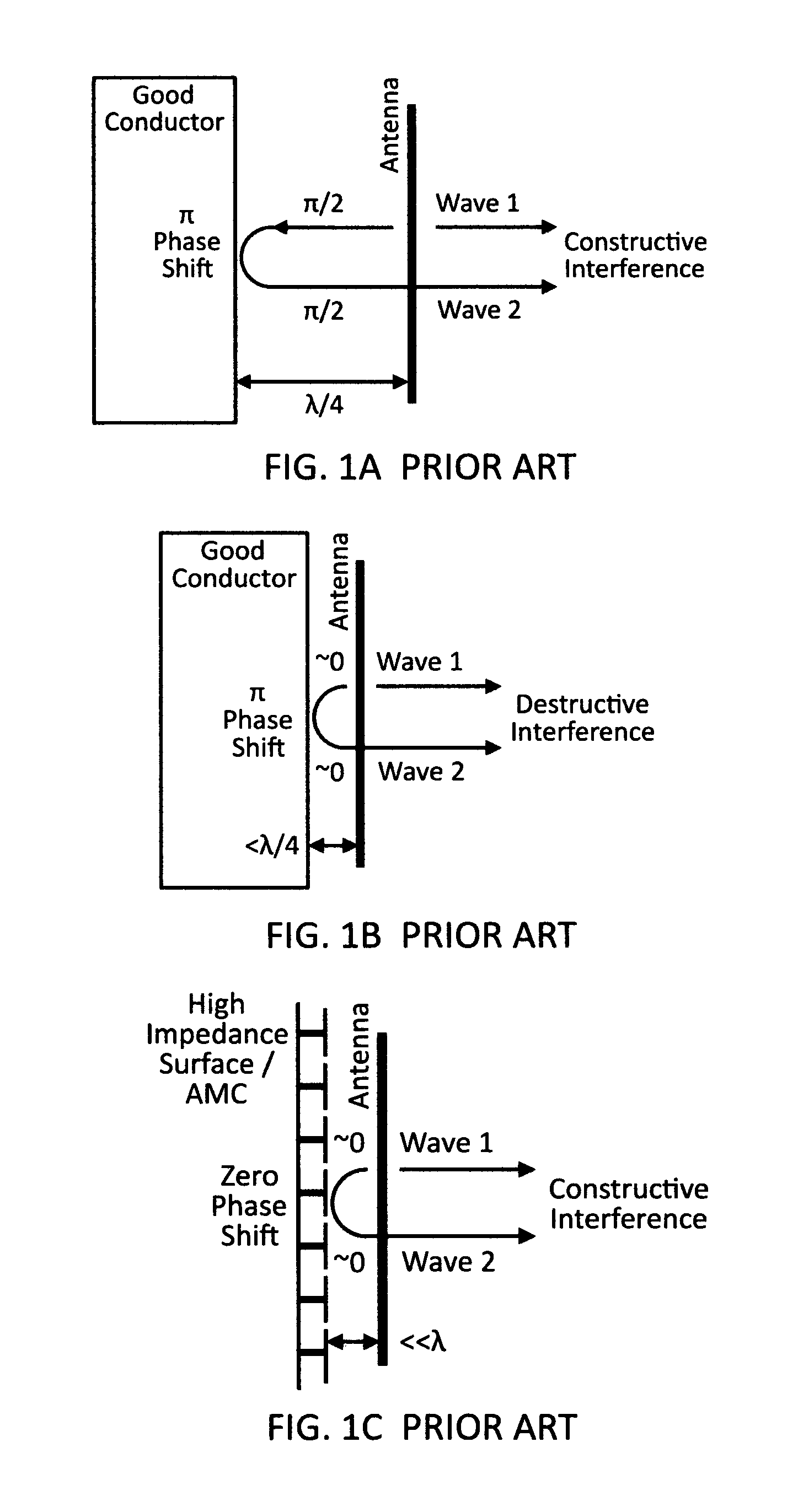Ultra-wide band (UWB) artificial magnetic conductor (AMC) metamaterials for electrically thin antennas and arrays
an artificial magnetic conductor and antenna technology, applied in the direction of electrically short antennas, antenna feed intermediates, antennas, etc., can solve the problems of inability to achieve any practical useful bandwidth at lower frequencies, the amc system is no longer tuned to receive the incident electromagnetic field, and the fraction of bandwidth is narrow. , to achieve the effect of minimizing power reflection, maximizing received power transfer, and reducing the size of the antenna
- Summary
- Abstract
- Description
- Claims
- Application Information
AI Technical Summary
Benefits of technology
Problems solved by technology
Method used
Image
Examples
Embodiment Construction
[0034]FIG. 1A shows a traditional quarter wave standoff of an actively fed antenna or thin array above a PEC backplane. The backward traveling wave 2 propagates a quarter wavelength (90 degrees) to the left, reflects from the PEC backplane with a 180 degree (pi radians) phase shift, then travels back to the antenna to meet up with a forward traveling (to the right) direct path wave emanating from the antenna. Because of the resulting 360 phase shift on the previously backward traveling, now reflected wave 2, it is in phase with the direct path wave 1 emanating from the antenna so that both now travel in phase to the right. This results in them adding constructively providing a doubling of the amplitude and a resulting quadrupling (6 dB) of the power / gain on boresight (i.e. directly to the right in the figure). If one were to observe the gain at angles off boresight, one would see lower relative gain off boresight versus an antenna without a backplane. This is because of the differen...
PUM
 Login to View More
Login to View More Abstract
Description
Claims
Application Information
 Login to View More
Login to View More - R&D
- Intellectual Property
- Life Sciences
- Materials
- Tech Scout
- Unparalleled Data Quality
- Higher Quality Content
- 60% Fewer Hallucinations
Browse by: Latest US Patents, China's latest patents, Technical Efficacy Thesaurus, Application Domain, Technology Topic, Popular Technical Reports.
© 2025 PatSnap. All rights reserved.Legal|Privacy policy|Modern Slavery Act Transparency Statement|Sitemap|About US| Contact US: help@patsnap.com



